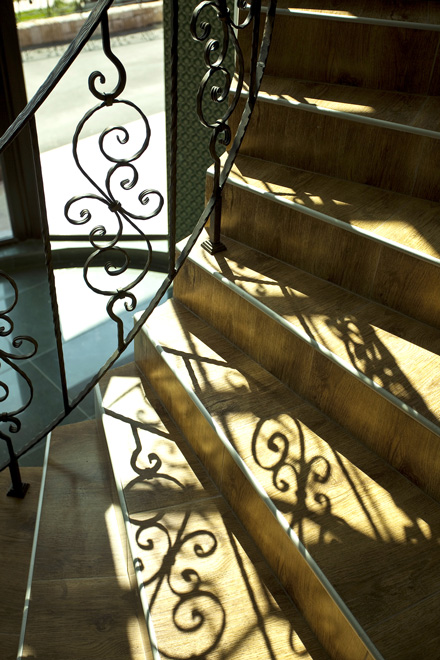Spiral staircase kit
When you have space in your living room, and an old fashioned staircase leading to your upper floor, you might wonder what you could do to improve the aesthetic appeal of your home. A wooden staircase covered in carpet can be ugly, blocks out light, and the pile in the carpet can harbour bacteria and germs.
A spiral staircase kit can add value as well as aesthetic appeal.
Spiral stairs are not just for period homes, they are in fashion in the 21st century, and many modern builds will boast open spiraling stairs that lead from the lounge to the upper landing. Investing in a spiral staircase needn’t cost a fortune; particularly when it comes in the form of a spiral staircase kit.
Kits are available in a range of different lengths materials and geometric configurations. The materials that you choose will depend on the look you are trying to achieve. You can choose from wooden or metal designs in traditional of modern styles.
A spiraling staircase can look stunning with wrought iron spindles and balusters; but for a modern home you may like to choose wooden stairs and an iron baluster. Your baluster should be made of metal to ensure that it does not wobble and that your stairs are sturdy and strong and will last for many years to come.
Spiral staircase kits can be fitted by yourself, or by specialist installers or suppliers. Unless you have a lot of time and the expert knowledge required, using the professionals is probably advisable; they will ensure that your stairs are sturdy and strong and that the individual stairs are straight and properly fitted.
When you remove a solid staircase and replace it with an open spiral staircase it will not just bring more space to your home but also more natural light and will create a new focal point.
--Classic Ironworks 08:53, 15 June 2015 (BST)
[edit] Find out more
[edit] Related articles on Designing Buildings Wiki
Featured articles and news
Amendment to the GB Energy Bill welcomed by ECA
Move prevents nationally-owned energy company from investing in solar panels produced by modern slavery.
Gregor Harvie argues that AI is state-sanctioned theft of IP.
Heat pumps, vehicle chargers and heating appliances must be sold with smart functionality.
Experimental AI housing target help for councils
Experimental AI could help councils meet housing targets by digitising records.
New-style degrees set for reformed ARB accreditation
Following the ARB Tomorrow's Architects competency outcomes for Architects.
BSRIA Occupant Wellbeing survey BOW
Occupant satisfaction and wellbeing tool inc. physical environment, indoor facilities, functionality and accessibility.
Preserving, waterproofing and decorating buildings.
Many resources for visitors aswell as new features for members.
Using technology to empower communities
The Community data platform; capturing the DNA of a place and fostering participation, for better design.
Heat pump and wind turbine sound calculations for PDRs
MCS publish updated sound calculation standards for permitted development installations.
Homes England creates largest housing-led site in the North
Successful, 34 hectare land acquisition with the residential allocation now completed.
Scottish apprenticeship training proposals
General support although better accountability and transparency is sought.
The history of building regulations
A story of belated action in response to crisis.
Moisture, fire safety and emerging trends in living walls
How wet is your wall?
Current policy explained and newly published consultation by the UK and Welsh Governments.
British architecture 1919–39. Book review.
Conservation of listed prefabs in Moseley.
Energy industry calls for urgent reform.

























